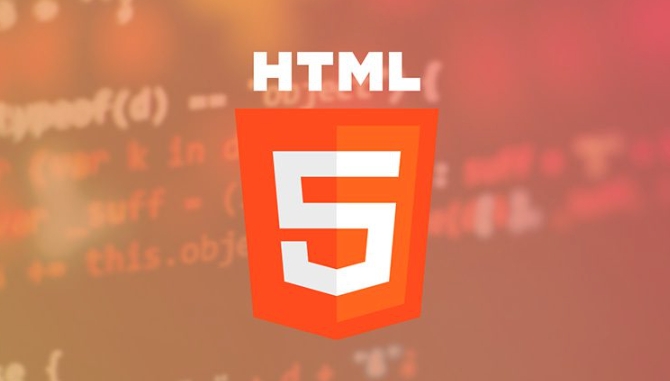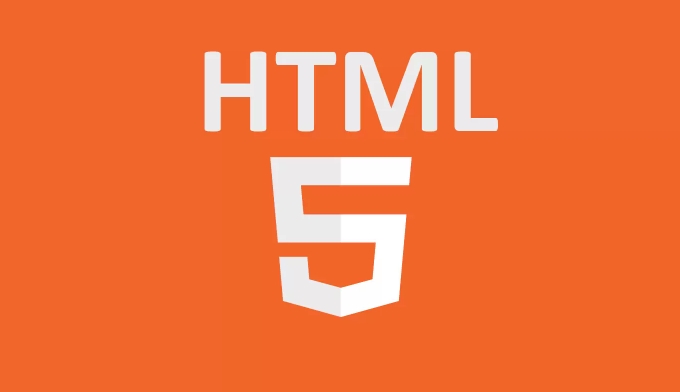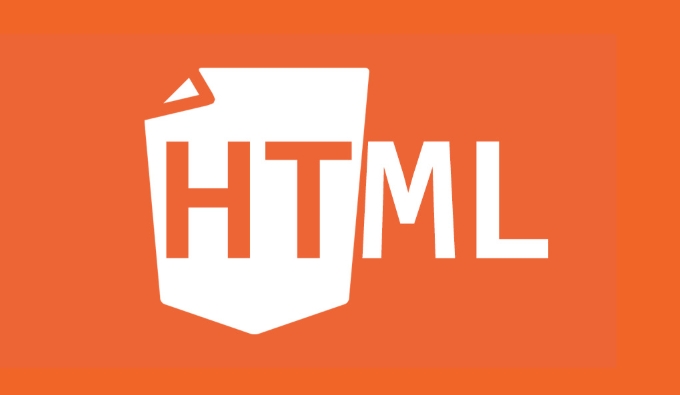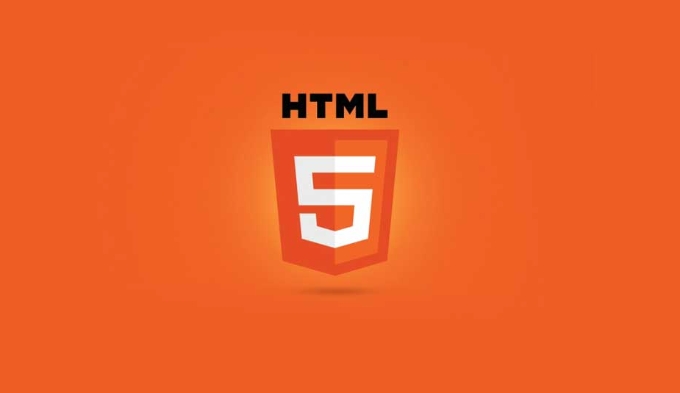,
<p>, <strong>, and <em> help organize and emphasize content. 3. Links with and images with are crucial for interactivity and visual appeal. 4. Semantic tags including <header>, <nav>, <main>, <section>, <article>, and <footer> improve clarity and accessibility, making pages more meaningful to both users and search engines.
<p>
are crucial for interactivity and visual appeal. 4. Semantic tags including <header>, <nav>, <main>, <section>, <article>, and <footer> improve clarity and accessibility, making pages more meaningful to both users and search engines.
<p> <p>If you're just starting with HTML, it’s easy to get overwhelmed by the sheer number of tags. But the truth is, you only need a solid handful to build most web pages effectively. The most important ones are those that structure your content clearly and semantically — meaning they help both browsers and screen readers understand what each part of your page is for.
<p>If you're just starting with HTML, it’s easy to get overwhelmed by the sheer number of tags. But the truth is, you only need a solid handful to build most web pages effectively. The most important ones are those that structure your content clearly and semantically — meaning they help both browsers and screen readers understand what each part of your page is for.

1. Basic Structure Tags: The Skeleton of Every Page
<p>Every HTML document starts with a few essential tags that set the foundation. These aren’t flashy, but without them, nothing else works right.
-
wraps the entire document -
contains metadata like title and character set -
holds all the visible content
-
<title></title>(shows up in the browser tab) -
<meta charset="UTF-8">(ensures proper text display)
 <p>A minimal example looks like this:
<p>A minimal example looks like this:<!DOCTYPE html> <html> <head> <meta charset="UTF-8"> <title>My First Page</title> </head> <body> <h1>Hello World</h1> <p>This is my first paragraph.</p> </body> </html><p>This might seem basic, but skipping these can cause issues later — like broken encoding or missing titles.
2. Text Formatting Tags: Making Content Readable
<p>Text makes up most of any webpage, so knowing how to format it properly is key. Headings, paragraphs, and emphasis tags go a long way.<p>Use heading tags (<h1> to <h6>) to outline your page like a book. <h1> should be your main title, followed by <h2 id="code-for-sections-and-so-on-Search-engines-use-these-to-understand-your-content-hierarchy-p-p-Paragraphs-go-inside-code-p-code-and-inline-elements-like-bold-code-strong-code-and-italics-code-em-code-help-emphasize-points-Avoid-using-code-b-code-or-code-i-code-unless-you-really-just-want-styling-without-semantic-meaning-p-p-Some-common-formatting-tools-p-ul-li-code-strong-code-for-strong-importance-li-li-code-em-code-for-emphasis-li-li-code-br-code-line-break-useful-in-poems-or-addresses-li-li-code-hr-code-horizontal-rule-to-separate-content-visually-li-ul-p-Don-t-forget-white-space-browsers-ignore-extra-spaces-and-line-breaks-in-code-unless-you-use-these-tags-p-h-Links-and-Images-Connecting-and-Visualizing"> for sections, and so on. Search engines use these to understand your content hierarchy.<p>Paragraphs go inside <p>, and inline elements like bold (<strong>) and italics (<em>) help emphasize points. Avoid using <b> or <i> unless you really just want styling without semantic meaning.<p>Some common formatting tools:<strong>– for strong importance<em>– for emphasis<br>– line break (useful in poems or addresses)<hr />– horizontal rule to separate content visually
3. Links and Images: Connecting and Visualizing
<p>The web wouldn’t be the web without links and images. These two tags are interactive essentials.<p>Links use<a href="url">Link text</a>. Always include href, and test your links to make sure they go where they should. You can also link to internal sections using anchors or open links in new tabs with target="_blank" — but use that sparingly.<p>Images are self-closing tags: <img src="/static/imghw/default1.png" data-src="image.jpg" class="lazy" alt="What are the most important HTML tags to learn">. The alt attribute is crucial for accessibility and SEO. Don’t skip it — even if the image is decorative, use an empty alt (alt="").<p>Tips when working with media:- Use descriptive file names for images (e.g.,
dog-playing.jpginstead ofIMG001.jpg) - Keep image sizes reasonable to avoid slowing down your page
- For external links, consider adding
rel="noopener"for security
4. Semantic Tags: Building Meaningful Pages
<p>Modern HTML includes semantic tags that describe what different parts of your page do — things like<header>, <nav>, <main>, <section>, <article>, and <footer>.<p>Using these instead of generic <div>s helps search engines and assistive technologies interpret your layout more accurately. It’s not just about style; it’s about clarity.<p>For example:<header>
<h1>My Website</h1>
<nav>
<a href="/">Home</a>
<a href="/about">About</a>
</nav>
</header>
<main>
<article>
<h2>Blog Post Title</h2>
<p>Content goes here...</p>
</article>
</main>
<footer>
<p>? 2025 My Site</p>
</footer><p>These tags don’t change how things look by default, but they improve structure and accessibility significantly.
<p>That’s a solid core group to learn first. Once you’re comfortable with these, the rest will come naturally as you build real pages.
The above is the detailed content of What are the most important HTML tags to learn. For more information, please follow other related articles on the PHP Chinese website!

Hot AI Tools

Undress AI Tool
Undress images for free

Undresser.AI Undress
AI-powered app for creating realistic nude photos

AI Clothes Remover
Online AI tool for removing clothes from photos.

Clothoff.io
AI clothes remover

Video Face Swap
Swap faces in any video effortlessly with our completely free AI face swap tool!

Hot Article

Hot Tools

Notepad++7.3.1
Easy-to-use and free code editor

SublimeText3 Chinese version
Chinese version, very easy to use

Zend Studio 13.0.1
Powerful PHP integrated development environment

Dreamweaver CS6
Visual web development tools

SublimeText3 Mac version
God-level code editing software (SublimeText3)

Hot Topics
 How do I stay up-to-date with the latest HTML standards and best practices?
Jun 20, 2025 am 08:33 AM
How do I stay up-to-date with the latest HTML standards and best practices?
Jun 20, 2025 am 08:33 AM
The key to keep up with HTML standards and best practices is to do it intentionally rather than follow it blindly. First, follow the summary or update logs of official sources such as WHATWG and W3C, understand new tags (such as) and attributes, and use them as references to solve difficult problems; second, subscribe to trusted web development newsletters and blogs, spend 10-15 minutes a week to browse updates, focus on actual use cases rather than just collecting articles; second, use developer tools and linters such as HTMLHint to optimize the code structure through instant feedback; finally, interact with the developer community, share experiences and learn other people's practical skills, so as to continuously improve HTML skills.
 How do I use the element to represent the main content of a document?
Jun 19, 2025 pm 11:09 PM
How do I use the element to represent the main content of a document?
Jun 19, 2025 pm 11:09 PM
The reason for using tags is to improve the semantic structure and accessibility of web pages, make it easier for screen readers and search engines to understand page content, and allow users to quickly jump to core content. Here are the key points: 1. Each page should contain only one element; 2. It should not include content that is repeated across pages (such as sidebars or footers); 3. It can be used in conjunction with ARIA properties to enhance accessibility. Usually located after and before, it is used to wrap unique page content, such as articles, forms or product details, and should be avoided in, or in; to improve accessibility, aria-labeledby or aria-label can be used to clearly identify parts.
 How do I create a basic HTML document?
Jun 19, 2025 pm 11:01 PM
How do I create a basic HTML document?
Jun 19, 2025 pm 11:01 PM
To create a basic HTML document, you first need to understand its basic structure and write code in a standard format. 1. Use the declaration document type at the beginning; 2. Use the tag to wrap the entire content; 3. Include and two main parts in it, which are used to store metadata such as titles, style sheet links, etc., and include user-visible content such as titles, paragraphs, pictures and links; 4. Save the file in .html format and open the viewing effect in the browser; 5. Then you can gradually add more elements to enrich the page content. Follow these steps to quickly build a basic web page.
 How do I create checkboxes in HTML using the element?
Jun 19, 2025 pm 11:41 PM
How do I create checkboxes in HTML using the element?
Jun 19, 2025 pm 11:41 PM
To create an HTML checkbox, use the type attribute to set the element of the checkbox. 1. The basic structure includes id, name and label tags to ensure that clicking text can switch options; 2. Multiple related check boxes should use the same name but different values, and wrap them with fieldset to improve accessibility; 3. Hide native controls when customizing styles and use CSS to design alternative elements while maintaining the complete functions; 4. Ensure availability, pair labels, support keyboard navigation, and avoid relying on only visual prompts. The above steps can help developers correctly implement checkbox components that have both functional and aesthetics.
 How do I minimize the size of HTML files?
Jun 24, 2025 am 12:53 AM
How do I minimize the size of HTML files?
Jun 24, 2025 am 12:53 AM
To reduce the size of HTML files, you need to clean up redundant code, compress content, and optimize structure. 1. Delete unused tags, comments and extra blanks to reduce volume; 2. Move inline CSS and JavaScript to external files and merge multiple scripts or style blocks; 3. Simplify label syntax without affecting parsing, such as omitting optional closed tags or using short attributes; 4. After cleaning, enable server-side compression technologies such as Gzip or Brotli to further reduce the transmission volume. These steps can significantly improve page loading performance without sacrificing functionality.
 How has HTML evolved over time, and what are the key milestones in its history?
Jun 24, 2025 am 12:54 AM
How has HTML evolved over time, and what are the key milestones in its history?
Jun 24, 2025 am 12:54 AM
HTMLhasevolvedsignificantlysinceitscreationtomeetthegrowingdemandsofwebdevelopersandusers.Initiallyasimplemarkuplanguageforsharingdocuments,ithasundergonemajorupdates,includingHTML2.0,whichintroducedforms;HTML3.x,whichaddedvisualenhancementsandlayout
 How do I use the element to represent the footer of a document or section?
Jun 25, 2025 am 12:57 AM
How do I use the element to represent the footer of a document or section?
Jun 25, 2025 am 12:57 AM
It is a semantic tag used in HTML5 to define the bottom of the page or content block, usually including copyright information, contact information or navigation links; it can be placed at the bottom of the page or nested in, etc. tags as the end of the block; when using it, you should pay attention to avoid repeated abuse and irrelevant content.
 How do I embed video in HTML using the element?
Jun 20, 2025 am 10:09 AM
How do I embed video in HTML using the element?
Jun 20, 2025 am 10:09 AM
To embed videos in HTML, use tags and specify the video source and attributes. 1. Use src attributes or elements to define the video path and format; 2. Add basic attributes such as controls, width, height; 3. To be compatible with different browsers, you can list MP4, WebM, Ogg and other formats; 4. Use controls, autoplay, muted, loop, preload and other attributes to control the playback behavior; 5. Use CSS to realize responsive layout to ensure that it is adapted to different screens. Correct combination of structure and attributes can ensure good display and functional support of the video.






